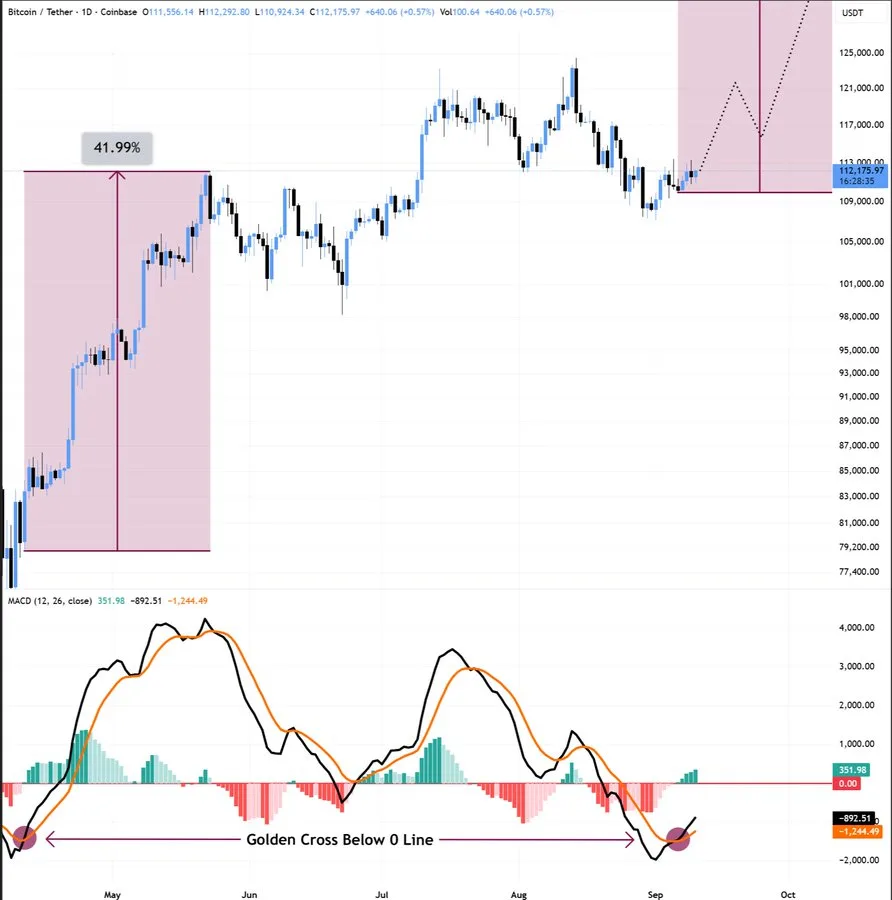Bitcoin Rallies on CPI Data but Jobless Claims Add Pressure

- CPI holds steady at 2.9%, while jobless claims surge to 263K, signaling economic concerns.
- Bitcoin’s rally is fueled by Fed rate cut expectations, but rising recession risks remain.
- BTC’s price action mirrors past CPI trends, with rallies followed by potential corrections.
Bitcoin is once again in the spotlight as new U.S. economic data delivers a mixed signal to markets. The Consumer Price Index (CPI) held at 2.9% year-over-year, underscores persistent inflationary pressure, while jobless claims surged to 263,000, the highest in four years. Considering the contrast between the prices and the labour market, investors hint at a tense backdrop. Moreover, the rise in CPI has prompted the Federal Reserve to take a dovish move.
As a result, expectations for an interest rate cut are rising, with many predicting a 25 basis point reduction in the September meeting. Also, lower interest rates would make Bitcoin more appealing for returns as investors look for alternatives to traditional financial instruments.
However, the increase in jobless claims poses a massive threat. The claims soared to 263,000 last week, the highest since October 2021. This indicates the increasing instability in the labor market and a potential economic stagnation. If this persists, recession fears would become real, thus making risk assets, including Bitcoin, less appealing to investors.
Bitcoin’s Rally: Could History Repeat with Fed Rate Cuts?
The most significant rate cut cycle from the Federal Reserve occurred in March 2020, amid the economic chaos triggered by the Covid-19 pandemic. The Fed reduced rates by 50 basis points on March 3, 2020, followed by a 100 basis point cut on March 15, bringing the rates close to zero (0–0.25%). This aggressive move led to massive liquidity injections, commonly known as quantitative easing (QE).
Initially, Bitcoin and other cryptocurrencies saw sharp declines due to panic selling, but the influx of liquidity ultimately fueled a strong recovery. By November 2021, Bitcoin had skyrocketed from around $5,000 in March 2020 to a high of $69,000.
The recent trends in prices imply that Bitcoin might be on the verge of another upswing. Bitcoin rose past $114,500 after the release of the CPI data, which showed that inflation is a concern to investors.
Nonetheless, this price action suggests that Bitcoin might be undergoing a new price discovery phase, with forecasts mentioning an approximate value of $140,000 being sold in the forthcoming months. The technical indicators of Bitcoin also outline the possibility of a bullish trend.
Meanwhile, a bullish crossover occurred on the MACD on September 5, which was the first bullish crossover since April. In the past, closely matched crossovers have been succeeded by massive price rises. In the last incident, Bitcoin surged over 40% within a month, leaving people with high expectations for the next spike in Bitcoin.

Source: X
Bitcoin Mirrors Past CPI Trends with Rally and Potential Decline
Analyst Ted Pillows indicated that the current price action of Bitcoin resembles its previous price movements of CPI. He observed that in the past three CPI reports, Bitcoin generally gained momentum before the data was released, but dipped shortly afterward. Yet as Bitcoin soars ahead of the release of CPI data, Pillows contends that a similar dump may occur, as the impacts of the data take hold.
Related: Bitcoin Rises as US CPI Data Falls Below Inflation Targets
Increasing jobless claims and growing inflation may help create stagflation, a situation where inflation is elevated and economic growth stays flat. Handling stagflation is hard, and if the Federal Reserve cannot regulate both inflation and growth, Bitcoin is likely to have a negative impact.
The future of Bitcoin is connected to the performance of the U.S. economy, considering its macroeconomic problems. With inflation and unemployment claims staying as critical factors, the upcoming months will showcase whether the price of Bitcoin skyrockets or faces major downturns.




